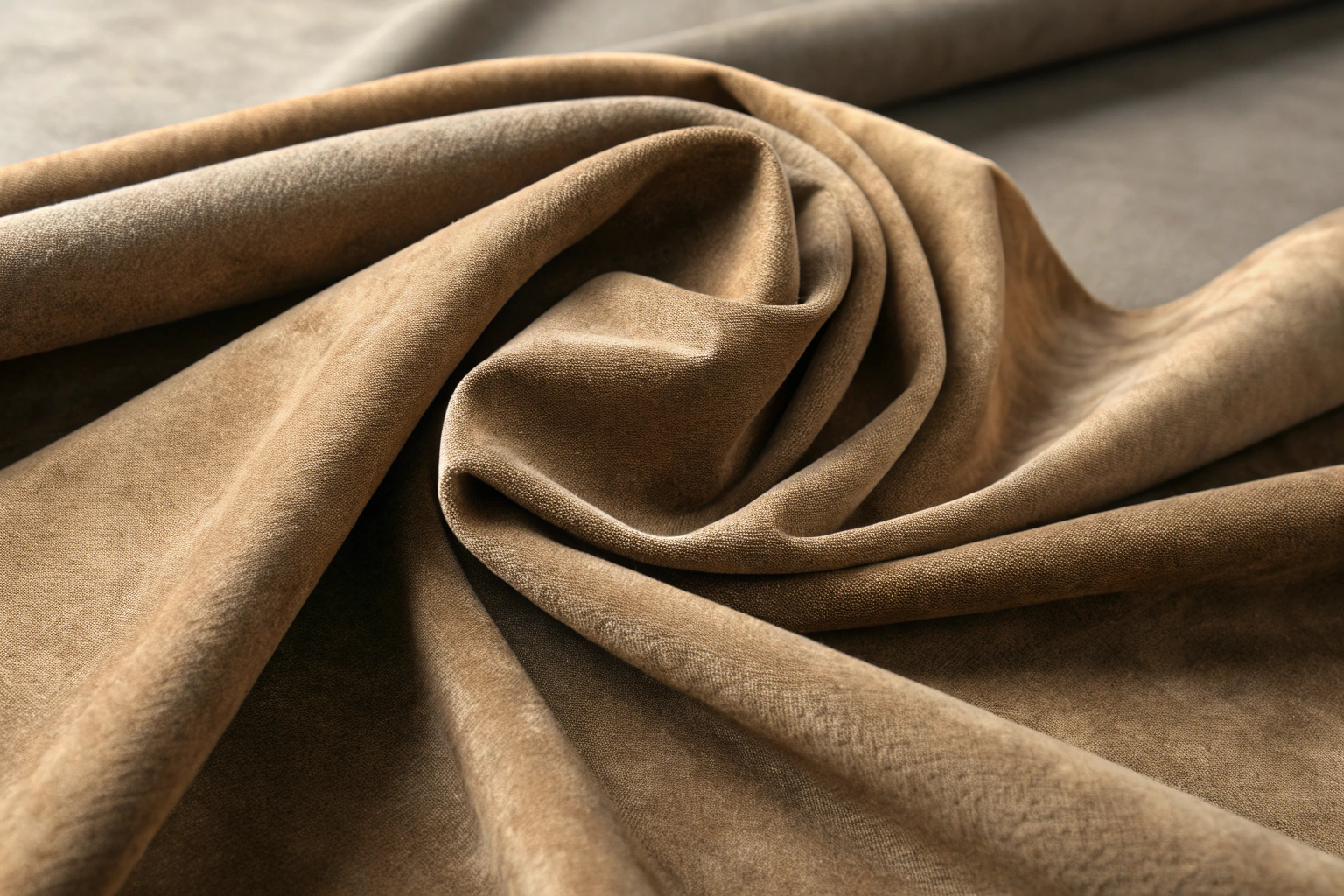Suede fabric is soft, luxurious, and versatile, making it a popular choice for high-end garments and accessories. Understanding its types and care requirements can help you get the most out of this elegant material.

Suede offers a unique feel and appearance, making it highly sought after. Whether you’re looking to buy suede clothing or accessories, knowing the different types and how to maintain it can help you make the right choice.
What are the different types of suede fabric?
Suede is typically made from the underside of animal hides like cowhide, lamb, or goat, giving it its soft and velvety texture. There are a few different types of suede, each offering its own qualities and uses.
The most common type of suede is traditional suede, which comes from the inner layer of the animal hide. This type of suede is soft and smooth with a slightly napped texture, making it perfect for jackets, shoes, and bags. Then, there’s nubuck, which is made from the outer layer of the hide. Nubuck has a finer, denser texture and is more durable than traditional suede. It’s often used for high-end footwear and furniture.
Another alternative is synthetic suede, made from polyester or nylon. It mimics the look and feel of real suede but is more affordable and easier to care for. Synthetic suede is often preferred by those seeking vegan options or looking for a lower-cost alternative.
The choice between these types will depend on your needs. While traditional suede offers the luxurious softness, nubuck offers more durability, and synthetic suede offers an easier-to-maintain option at a lower price.
How do you maintain suede fabric?
Suede is a delicate material, and maintaining it requires special care. Unlike leather, suede can easily stain and is more susceptible to damage from moisture. To keep it in good condition, it’s important to handle it with care.
First, avoid getting suede wet as much as possible. If it does get wet, blot the moisture immediately with a clean cloth and allow it to air dry naturally—never rub the fabric, as that can cause it to lose its texture. To clean suede, use a special suede brush to gently lift the nap (the tiny fibers on the surface) and remove any dust or dirt. For stains, a suede eraser can help, but always be gentle to avoid damaging the fabric.
For extra protection, you can use a water-repellent suede protector. This helps prevent water damage and stains, but you must ensure you use a product that is safe for suede. Additionally, store your suede items in a cool, dry place and keep them out of direct sunlight. When storing shoes or bags, consider using dust bags to protect them from dirt and dust.
How can you tell good quality suede?
Good quality suede is soft, supple, and smooth, with a consistent texture. When evaluating suede, you’ll want to look for fabrics that are even in texture and color, as poor-quality suede may have patches or inconsistencies in its appearance.
A key sign of good-quality suede is its softness. It should feel smooth and velvety, not stiff or coarse. The fabric should also have a consistent nap, meaning the tiny fibers on the surface should be even and not overly coarse. Higher-quality suede tends to have a richer color and a natural sheen, which adds to its luxurious appearance. If the suede feels too thin or flimsy, it may not be of the highest quality, so it’s important to inspect the texture carefully.
Thickness also plays a role. Thicker suede is often more durable, and it should feel substantial without being overly heavy or stiff. Good-quality suede should be free of visible defects like holes, scratches, or uneven areas.
What are the properties of suede fabric?
Suede is prized for its soft texture and luxurious feel. The fabric’s unique properties make it highly desirable for fashion and home décor. Suede is known for its softness, which gives it an elegant, high-end feel. It’s also breathable, making it comfortable to wear in both cooler and warmer temperatures, as it allows air to circulate.
Aside from comfort, suede is durable when properly cared for. It’s less prone to wear and tear than some other fabrics, and its resistance to fraying and fading makes it ideal for long-lasting use. The fabric also has a unique texture with a natural sheen that changes depending on how the fabric is brushed. This gives suede a sophisticated, timeless appearance.
In addition, suede is versatile. It’s used in a wide range of products, from jackets and skirts to shoes, bags, and even furniture. Its luxurious look works well with both casual and formal styles, making it a timeless choice.
Conclusion
Suede is a luxurious fabric that offers both style and comfort. Its softness, breathability, and unique texture make it an attractive option for premium clothing and accessories. Whether you choose traditional suede, nubuck, or synthetic suede, understanding how to maintain it and identify quality fabric will help you get the most out of this elegant material. By following proper care tips, you can ensure that your suede items stay beautiful and last for years.

